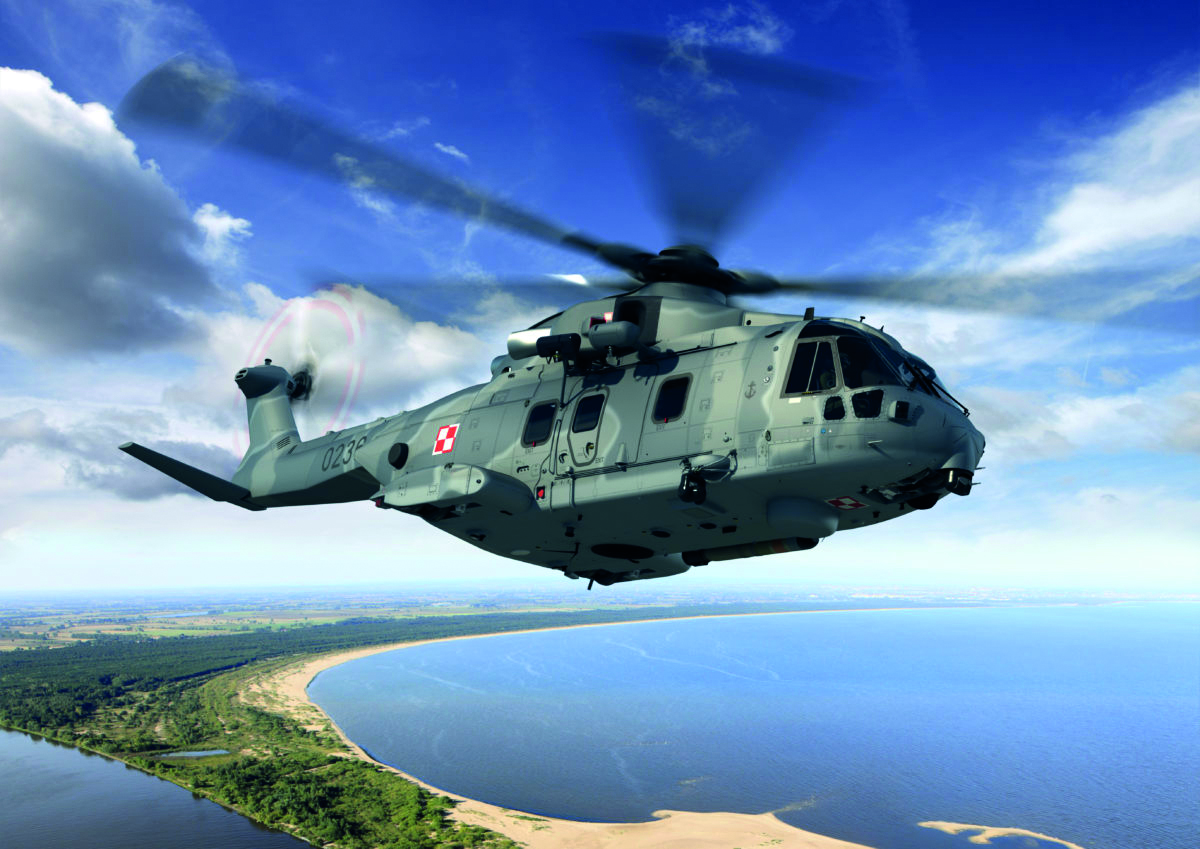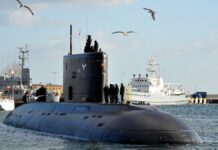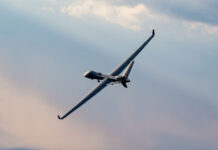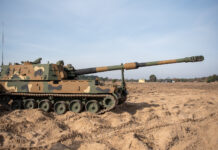Over the past several years, Poland set out a number of priority procurement programmes, which are expected to change the posture of the Polish Air Force, as well as the Army’s aviation fleet.
In early 2019, Polish authorities signed a contract for the procurement of 32 F-35A LIGHTNING II 5th generation multirole fighter aircraft. A few months later, an agreement for the delivery of four Leonardo AW101 helicopters in ASW/SAR configuration was also reached. Currently, the Polish MoD is in the process of defining requirements for the procurement of a number of other fixed- and rotary wing platforms. The modernisation process might, however, be disturbed by the ongoing Coronavirus pandemic, and an expected reduction in procurement funds as a result of the economic slowdown, or due to a redefining of acquisition priorities.

In February 2019, Poland’s Minister of Defence Mariusz Błaszczak, presented a new Technical Modernisation Plan (TMP) for the country’s Armed Forces. The document, which was later revised and updated in the autumn of 2019, outlined a number of priority procurement and modernisation programmes in the field of fixed and rotary wing platforms.
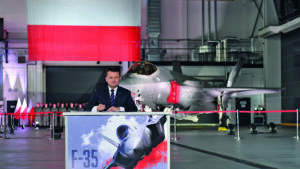
The most current TMP document, which has a value of €118Bn and covers the period of 2021-2035, sets the goal for procurement of new fifth generation multirole fighter aircraft and a number of modern attack helicopters under the HARPIA and KRUK programmes.
The first project was finalised at the end of January 2020, when a Letter of Offer and Acceptance (LOA) was signed by Minister Błaszczak at a ceremony held at the premises of the 4th Training Aviation Wing in Dęblin. The document covered the acquisition of 32 F-35A LIGHTNING II multirole fighter aircraft and had a value of €4Bn. The agreement also included logistical and training packages. The second programme is still ongoing. At the moment, it is very hard to predict when it will be finalised and which platform will eventually replace the Mi-24s currently operated in the field.
The rest of the Polish Armed Forces’ helicopters, as well as combat aircraft, are composed of locally manufactured W-3 and SW-4 helicopters, as well as Soviet-era Mi-2s, Mi-8s, Mi-17s, and Mi-14s, in addition to ex-US SH-2G and Su-22 fighter/bombers and MiG-29 fighters. Most of these platforms no longer meet their operational requirements, due to a number of factors such as age, overexploitation, technical condition or obsolescence. Only the W-3s, SW-4s and Mi-17s remain in an acceptable condition, which allows them to remain in service for some time longer.
New Multirole Fighter Aircraft
Deliveries of Polish F-35A fighter aircraft should commence in 2024 and run through to 2030. Under the current estimates, each year Poland will receive a batch of four to six aircraft. In the period 2024-2025, the first six F-35s will be temporarily stationed in the US, where they will serve for the training of pilots and maintenance personnel in one of the US Air Force’s bases. These aircraft should eventually be transferred to Poland by 2025-2026, following this training period.
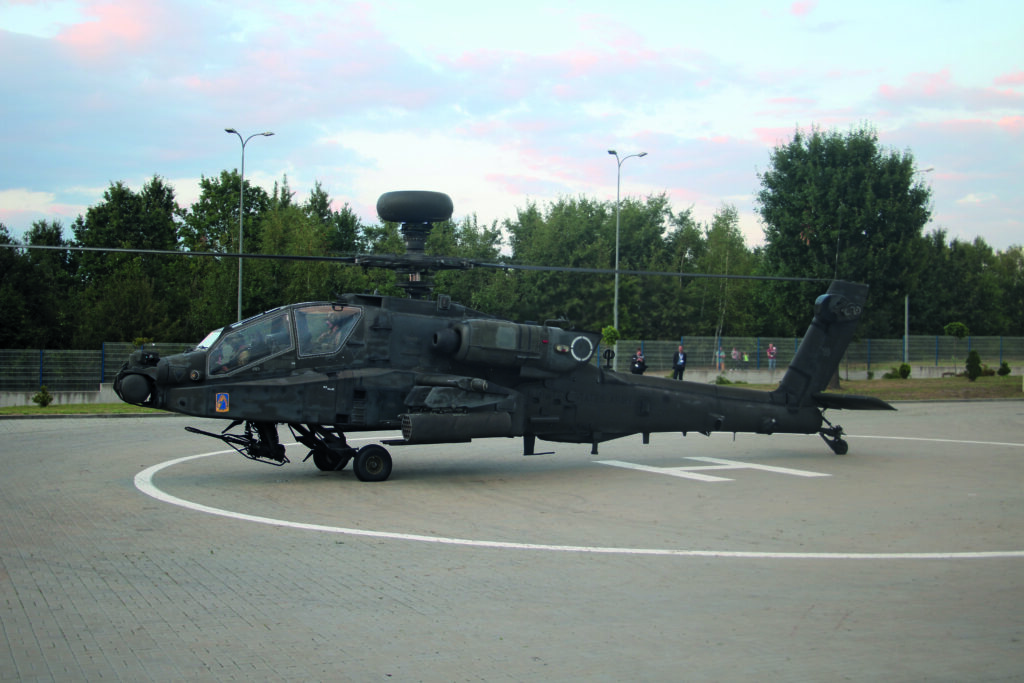
It is expected that as many as 24 Polish pilots and 90 maintenance personnel will undergo the training course on US soil. As a result, they will receive an instructor certificate, allowing them to conduct the training of future pilots and ground crews directly in Poland.
According to the agreement, most of the Polish F-35A fighters will be delivered in the Block 4 configuration, which will be the most modern standard at the time. However, the contract also includes a modernisation package, which will cover the upgrade of a few aircraft which will be originally delivered in a less advanced version to the desired configuration – most probably the less stable Block 3. This means that a small batch of Polish F-35s, probably those which will be temporarily stationed in the US for the training of pilots and maintenance personnel, will be from an earlier production lot, indicating that they might have originally been manufactured for another user country.

The Polish MoD envisions that the country’s F-35A fighter aircraft will reach their Initial Operational Capability (IOC) only after a number of requirements are met. These include the acceptance of the delivery of at least eight jets, training of a sufficient number of pilots and maintenance personnel, as well as delivery of necessary spares and operational equipment.
Additional F-35As Probable
Although at this point Poland declares its ambition to only procure 32 F-35 fighter jets, some MoD officials have already indicated that the fleet of Polish 5th generation aircraft could increase in the future. Wojciech Skurkiewicz, the Secretary of State at the Ministry, has suggested that Poland might decide to acquire an additional batch of 16 F-35s at the later date.
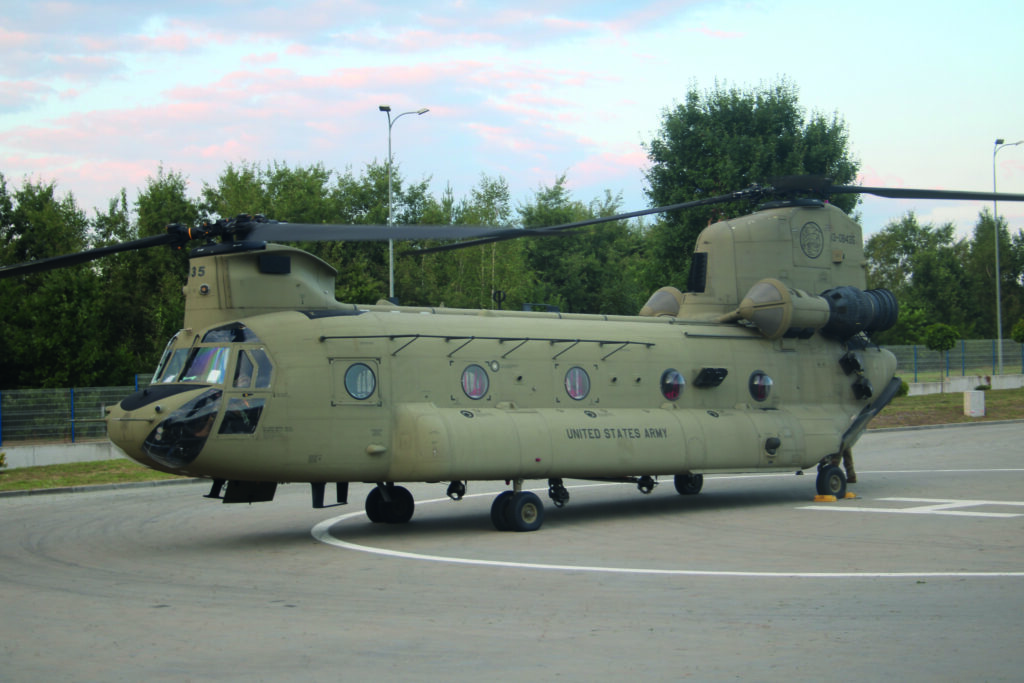
However, it is not sure if the MoD will eventually decide to increase the number of F-35 fighter jets in the future, due to a number of reasons. First of all, the ongoing Coronavirus pandemic will most surely result in an economic slowdown, which in turn would impact on the country’s procurement capabilities. Secondly, the new TMP also outlines a requirement for an additional batch of F-16 multirole aircraft, as well as modernisation of the existing fleet of the fighters, which are considered less operationally capable compared to more modern aircraft, but at the same time more affordable.
Although it was not immediately explained which variant of the F-16 aircraft could be eventually procured, it has become obvious that these fighters would supplement the fleet of 48 F-16C/D Block 52+ jets, that are currently operated by the Polish Air Force.
Requirement for Light Multiroles

The plan to procure a series of light, multirole aircraft was first revealed in 2012. However, over time, a handful of other investments, such as the planned acquisition of medium multirole helicopters (which ended up with the procurement of Airbus CARACAL rotorcraft, which was eventually cancelled in 2016) or modern attack helicopters were prioritised, de facto setting the PERKOZ project aside.
This programme was not even included in the current TMP. However, in early May 2020, the Armament Inspectorate, which acts on behalf of the Polish MoD, officially launched the project for procurement for 32 light, multirole helicopters.
According to the statement made by the Armament Inspectorate, the new helicopters will be procured in three variants: direct fire support, command and observation / reconnaissance. They will have a load carrying capacity of up to 1,000 kg of cargo or five soldiers in full combat equipment. Additionally, new rotorcraft will be required to have an advanced training capability, which means that it would have to be a two-engine platform with a doubled steering system.
During combat operations, the helicopter should be capable of carrying a full team of dismounts, as well as weapon systems and supplies. It should also be equipped with opto-electronic observation and self-defence systems.
New multirole helicopters will replace the currently operated and obsolete Mi-2s and some specialised versions of the W-3s. Mi-2s entered service over 50 years ago and their further use might prove to be impractical and even hazardous. According to recent data, in 2019 the Polish Armed Forces operated 61 of these helicopters (41 in the Army, 16 in the Air Force and 4 in the Navy), but no more than 40 of them were operationally capable.
Shortly after the PERKOZ project was launched, the Inspectorate informed that it had received a dozen applications from local and international companies, which show interest in the project. These included:
- Works 11
- Polish Armaments Group (Polska Grupa Zbrojeniowa, PGZ)
- Air Force Institute of Technology (Instytut Techniczny Wojsk Lotniczych)
- PZL-Świdnik (a subsidiary of Leonardo)
- Łukasiewicz Research Network
- Institute of Aviation (Sieć Badawcza Łukasiewicz – Instytut Lotnictwa)
- PZL Mielec (a subsidiary of Lockheed Martin)
- Hindustan Aeronautics (HAL) with Helicopter Division Hindustan Aeronautics
- Cobham Aviation Services UK
- Airbus Helicopters
- Bell Textron
- Elbit Systems
- The Boeing Company
A handful of participating entities will be able to offer fully equipped and operational rotorcraft, while other companies could submit particular onboard systems.
In mid-June, Bell Textron informed that it intended to offer Poland its H-1 family platforms, the A-1Z VIPER and UH-1Y VENOM, for a number of the country’s procurement programmes, including PERKOZ and KRUK. The manufacturer states that this duo is successfully operated by the US Marines Corp and has recently been selected by the Czech Armed Forces, which procured four VIPER and eight VENOM rotorcraft.
Other bidders could offer the following platforms for the PERKOZ programme:
- AW169M or AW109 (PZL-Swidnik)
- S-76 (PZL Swidnik / Lockheed Martin)
- H145M or H135 (Airbus Helicopters)
- Dhruv (Hindustan Aeronautics).
In due course, the Armaments Inspectorate will select a number of offers which will receive a Request for Information (RfI), and will be subsequently invited to participate in the Technical Dialogue procedure, which should be finalised by December.
The KONDOR Naval Helicopter Programme
In mid-2018, the Polish MoD publicly confirmed that the country has a requirement for a number of modern naval helicopters, which would replace the currently operated ex-US Kaman SH-2G SUPER SEASPRITE rotorcraft. The Polish Navy has to consider the decommissioning of the SUPER SEASPRITEs due to the fact that their OEM concluded offering technical support to the platform’s operators. Moreover, out of four Polish SH-2Gs, only one or two are flight-capable, while the rest are used for training purposes or as a source of spare parts.
Poland acquired four SH-2G SUPER SEASPRITEs in 2002-2003 for operations from two OLIVER HAZARD PERRY class frigates (ORP GEN. K. PUŁASKI and ORP GEN. T. KOŚCIUSZKO), which were transferred to Poland following their decommissioning from the US Navy. They were manufactured in 1992-1993 and now serve in anti-surface and anti-submarine warfare roles, as well as SAR and logistical support missions. They serve under the Naval Aviation Brigade of the Polish Navy.
The KONDOR programme was launched on 31 December 2019 by the Armaments Inspectorate. At that time, its goal was to acquire four to eight multirole rotorcraft with a maximum take-off weight of no more than 6,500 kg, capable of performing ASW operations and target acquisition with the use of onboard radar systems. New multirole maritime helicopters will be subordinate to the Naval Aviation Brigade of the Polish Navy.
Nine manufacturers signalled their intention to participate in the Technical Dialogue procedure. This included four local Polish companies: Enamor, Polish Armaments Group, PZL Mielec and PZL Swidnik, as well as five foreign entities:
- Airbus Helicopters
- Bell Textron
- Elbit Systems
- General Dynamics Mission Systems – Canada
- Kaman Aerospace Corporation.
Through the technical dialogue process, the Armament Inspectorate will define a number of technical requirements in connection with the planned procurement, which will be related to such issues as desired weapon systems, communications, self-defence, navigation, EW and Identification Friend or Foe systems.
However, it is expected that due to the Polish Navy’s strict requirements related to the platform’s MTOW, only a handful of manufacturers will ultimately decide to make a bid in the future tender.
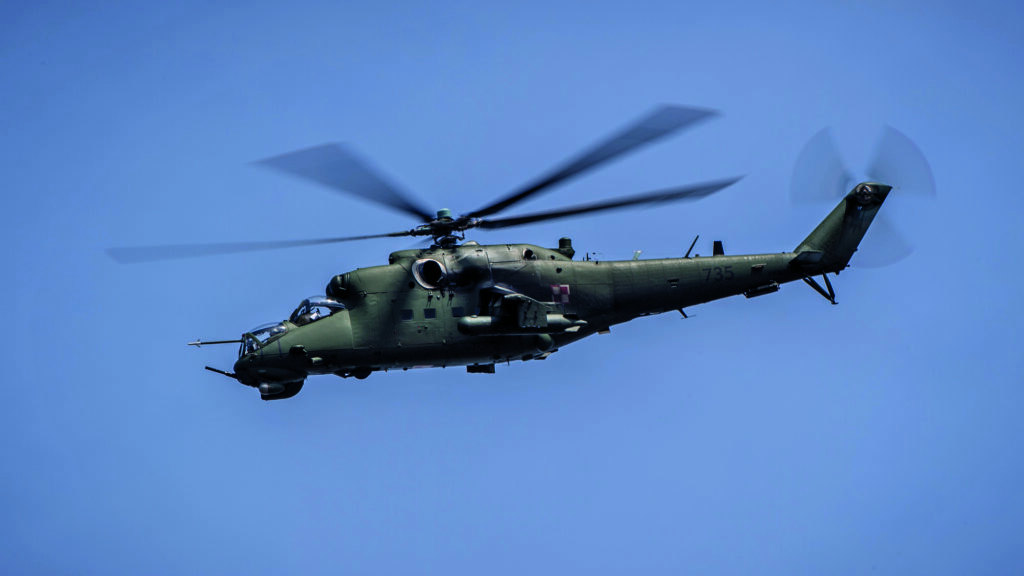
Bell has already confirmed that it will bid a specially modified version of its UH-1Y VENOM helicopter for the KONDOR programme, while Leonardo could propose its AW159 WILDCAT rotorcraft, which has already been selected by the Philippines, the Republic of Korea and UK. In return, Airbus might consider promoting its AS565 platform already operated by the navies of, inter alia, Bulgaria, France, Indonesia, Israel, Mexico and Saudi Arabia.
On the other hand, Kaman Aerospace Corporation, which in the past manufactured SUPER SEASPRITEs, as well as General Dynamics Mission Systems – Canada, have the requisite experience and capability of offering modernisation packages for the Polish Navy’s SH-2G rotorcraft. Both companies might present an offer for the extension of the operational service life of the Polish SH-2Gs.
The new helicopters would be deployed on a number of Polish Navy’s operational vessels, such as the OLIVER HAZARD PERRY class frigates, or the ORP SLAZAK (241) patrol corvette, which was commissioned in late 2019, as well as a series of MIECZNIK class coastal defence vessels, which until recently the defence services planned to procure in the future.
KRUK Awaits Finalisation
The Polish MoD is still expected to launch its long-touted tender for the procurement of 32 modern attack helicopters under the KRUK programme. This project calls for the replacement of a fleet of obsolete, Soviet-era Mi-24D/W rotorcraft, which no longer meet the requirements of the modern battlefield, with a more combat effective and multipurpose platform.
The analytical phase of the KRUK project was launched in 2014. However, ever since the Armament Inspectorate failed to start the formal tender procedure, in the meantime, there are repeatedly changing priorities and technical requirements for the project.
The tender was expected to finally be launched in 2020, however, the COVID-19 pandemic forced the MoD to once again postpone commencement of the competition. It left the Polish Army’s aviation with the no answer to the question about when it might receive new combat helicopters, which are needed to significantly enhance its operational and combat capabilities and also allow for the development of new tactics for enhanced cooperation with various types of units on the modern battlefield.
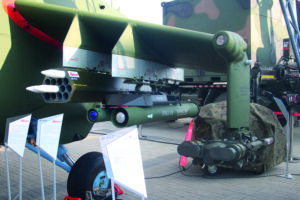
In recent years, Boeing (with its AH-64E) has been viewed as the favourite in the competition. The US manufacturer placed a lot of effort into promoting its platform among local experts and decision-makers. Aside from undoubted combat and operational capabilities, which the rotorcraft could add to the Polish Army’s aviation, Boeing has also highlighted that the same platform is already in service with Poland’s major allies, such as the UK and US, which would benefit Poland through commonality of combat systems and enhanced interoperability on the battlefield.
Furthermore, the company entered into agreements with a number of Polish defence manufacturers, most of which are subsidiaries of the Polish Armaments Group. Consequently, local entities could get involved in the production of specific elements of the future Polish AH-64E APACHE, as well as their future service, overhaul and maintenance, bringing revenue to the country’s economy.
However, despite the intensive promotion of its combat platform, Boeing still has to prepare itself for an extensive competition with a handful of other manufacturers, all of which bodes well for the Polish KRUK programme.
The other frontrunner for the Polish KRUK programme is Bell. The company perceives Poland as one of the most attractive export markets in the Central and Eastern Europe region. Therefore, the company has high hopes regarding Polish Army’s plans to acquire new attack rotorcraft.
Bell continues to promote its AH-1Z VIPER in Poland, convinced that the platform offers not only new combat capabilities, but in the long run could also allow the operator to benefit from significantly lowering the cost of platform’s purchase, production and sustainment.
Particularly, it hopes that Poland might also consider the acquisition of the other H-1 family platform, the UH-1Y VENOM utility, multirole helicopter. The manufacturer explains that both rotorcraft share 85% commonality of parts, which means significantly lower maintenance and sustainment costs.
Aware of Poland’s traditional and strict requirement for the procurement of any new weapon system to involve the local defence industry in its production, Bell has already entered into partnerships with a number of local industrial entities, such as the PGZ. As a result, the country could see extensive involvement if its own manufacturers in the production process and the establishment of a local service and maintenance facility in Poland, which could serve other operators of the H-1 family across the region.
The list of other major competitors in the KRUK programme include: Turkish Aerospace (T129 ATAK), Leonardo (AW249) or Airbus Helicopters (TIGER).
Competition for the KRUK programme will significantly stiffen as soon as the formal tender procedure is launched, especially given the fact that the project could prove to be even more profitable than originally seemed to be the case.
Although the original plan of the Armaments Inspectorate was for the procurement of an initial batch of 32 attack helicopters, the overall requirement for such a platform in the Polish Army’s aviation branch is believed to be around 100 units. Even if this number is never met, is seems probable that the KRUK programme might eventually bring even more revenue to the selected OEM.
The initial batch of 32 attack rotorcraft could be procured in two tranches, each consisting of 16 helicopters (the contract would simply most likely include an option for the second tranche). Assuming that the project continues according to the most current plan and time schedule, the first combat squadron of the Polish Army’s aviation branch could be equipped with new attack helicopters as soon as 2026.
Delayed Modernisation of Mi-24s
In 2019, the Armament Inspectorate launched a technical dialogue to determine a preferred scope and timeline for the planned modernisation of a fleet of Polish Mi-24 combat helicopters. The project called for the enhancement of the platform’s combat and operational capabilities, and an extension of its operational service until the new platform, procured under the KRUK programme, entered the field.
The technical dialogue was expected to lay the groundwork for specifying the best and most affordable options for the modernisation of a fleet of approximately 30 Mi-24D/W combat helicopters, which remain in the service of the Polish Army’s aviation. The main focus was placed on the acquisition of new weapon systems, such as new guided, anti-tank missiles, as well as more modern communication, self-defence, IFF, navigation and electronic warfare equipment.
A number of local and foreign defence companies have already shown interest in the technical dialogue procedure. Among them are:
- MBDA UK
- Paramount Aerospace Systems
- Megmar Logistics & Consulting
- Elbit Systems Advanced Technology Center
- Israel Aerospace Industries
- Lom Praha Trade
- Aselsan Elektronik Sanayi ve Ticaret
- PGZ
- Green Aviation (representing Motor Sich)
- Ibcol Polska
- Elbit Systems EW and SIGINT
- Elisra
- SCAT Security Consulting and Training
- BAE Systems
- SAAB Technologies Poland
- Roketsan.
For the modernisation of the Mi-24s, MBDA UK plans to offer Poland a wide range of multifunctional, guided weapon systems for air-to-surface and air-to-air applications, like the BRIMSTONE or MISTRAL ATAM. Another UK-based company, BAE Systems, has also confirmed its readiness to supply the Polish combat helicopter fleet with modern combat and auxiliary equipment, offering multiple technologies for attack helicopters, such as aircraft survivability equipment, transponders, data links, and precision munitions.
During MSPO 2019, a consortium composed of PGZ’s subsidiaries, along with the Air Force Institute of Technology (AFIT) and Israeli Rafael Advanced Defense Systems, proposed a modernisation package for the fleet of the Polish Army’s Mi-24D/W attack helicopters.
The modernisation programme includes the installation of modern communications, navigation and observation systems, as well as new weapon systems and more efficient avionics, including new head-up and multi-function displays. New self-defence mechanism, with missile warning receivers and infrared countermeasures equipment, are also part of the upgrade package. The helicopters could be armed with a family of SPIKE ER2, LR2, NLOS anti-tank missiles from Rafael, as well as locally designed PIORUN air-to-air missiles, NLPR-70 and WW-15 rocket launchers and 12,7mm machine guns.
As a result of the proposed modernisation process, Polish Mi-24s could regain the ability to detect, localise and engage the enemy’s tank and armoured vehicles, including those on the move. They could also conduct a wide range of missions, such as ISR, coordinating air combat operations and air-to-air combat, also while operating with other manned and unmanned aerial platforms.
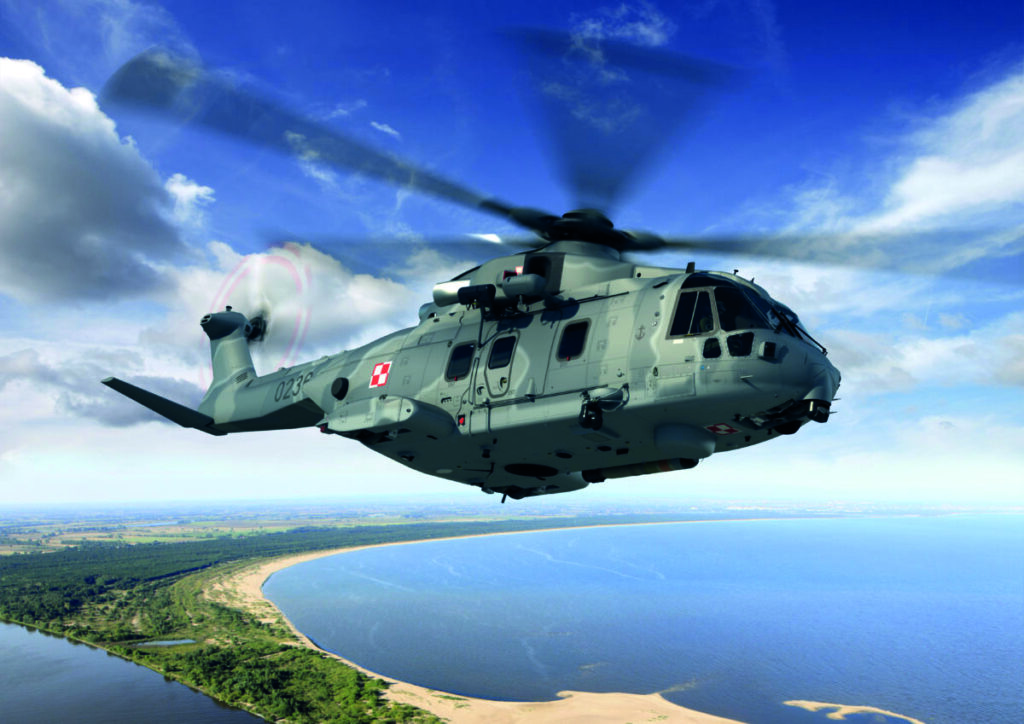
The proposed modernisation of Poland’s Mi-24D/W attack helicopters has been labelled an ‘interim solution’, which is necessary to implement, while the Armed Forces awaits the selection to the future attack helicopter through the KRUK programme.
It could take as long as ten years between the time Poland selects its new attack helicopter, and when that platform actually enters service. In the meantime, it will be for the obsolete Mi-24s to provide fire support to ground units during combat operations. Therefore, the Soviet-era platform requires an in-depth modernisation and enhancement of its operability.
New EOS for Polish Rotorcraft
In spring 2020, Israeli Rafael Advanced Defense Systems and the Polish PCO announced the signing of a Memorandum of Understanding (MoU) regarding cooperation in the production of the TOPLITE EOS system for the Polish Armed Forces.
The agreement was originally signed on 25 February. However, it took both companies over one month to publicly announce entering into a new partnership.
The MoU refers to cooperation in the production of the TOPLITE EOS system for the long-awaited modernisation of the fleet of Polish Mi-24D/W attack helicopters.
“Recently, Rafael signed a MoU with PCO for the transfer of technology and common production of the TOPLITE EOS for the Mi-24 upgrade programme. This cooperation will enhance the industrial base of the programme and we’re sure it will benefit additional programmes in which we can offer our advanced EOS,” said Gal Papier, Director of marketing and business development at Rafael’s Precision Tactical Weapon Systems.
Under the terms of the agreement, PCO will become the sole supplier of TOPLITE EOS systems for clients within the country. This would include not only the expected upgrade of Mi-24 helicopters, but also any other modernisation or procurement programmes, which might materialise in the future, such as KRUK, which calls for the procurement of a number of modern attack helicopters.
Following the agreement, PCO could become a member of Rafael’s TOPLITE EOS global supply chain. The Israeli company makes a point about the fact that ”TOPLITE optoelectronic heads are fully integrated with SPIKE missiles manufactured by another PGZ daughter company – Mesko. The system will supplement PCO’s OE payloads portfolio by adding a solution dedicated for the air domain”, a Rafael spokesperson said.
Entering into cooperation with PCO, as much as with other Polish defence companies, could significantly improve Rafael’s chances of participating in the Mi-24s modernisation programme. Especially, since that Rafael extensively promotes the idea of arming Polish attack helicopters with a wide range of its guided, anti-tank missile systems, such as SPIKE ER2, SPIKE LR2 and SPIKE NLOS.
AW101 for Poland
In April 2019, an agreement was signed between the Polish MoD and PZL Świdnik, a Leonardo company, for the delivery of four AW101 ASW/CSAR helicopters for the Polish Navy by 2022. The new rotorcraft will be manufactured in the ASW/CSAR configuration in a deal worth €374M.
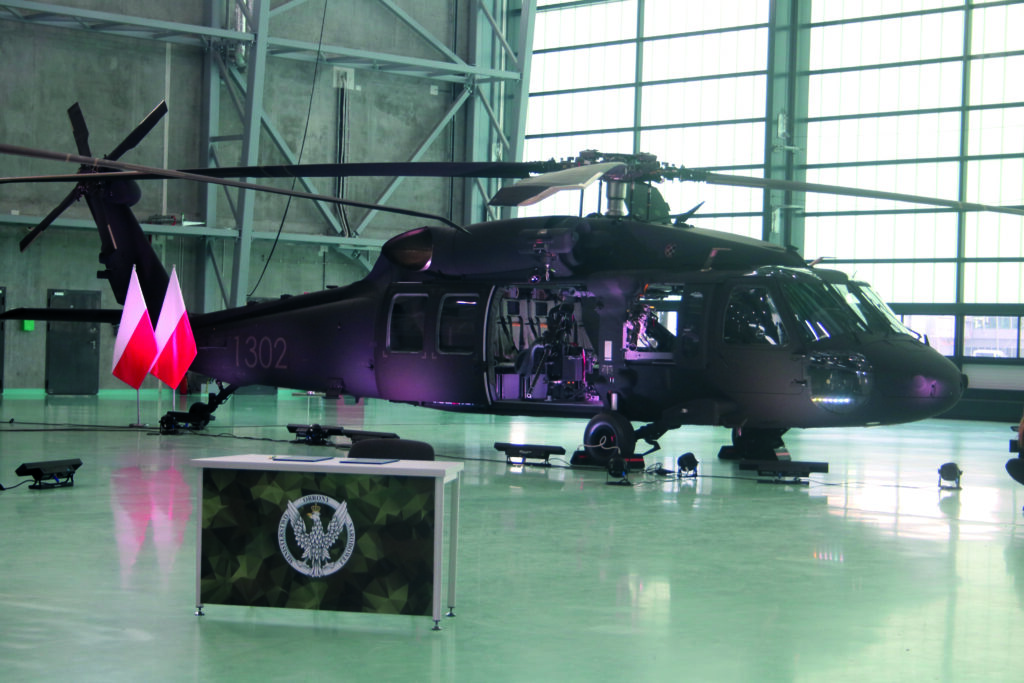
“We have signed a contract, which provides PZL Swidnik with a growth potential. Lately we’ve acquired helicopters for Special Forces, and now we will also significantly enhance our capabilities to perform anti-submarine warfare (ASW) operations from the air. These helicopters will also be suited for search and rescue (SAR) operations,” said Mariusz Blaszczak, Poland’s Defence Minister, who attended the ceremony. “PZL Swidnik’s role will be crucial not only as prime contractor for this new contract, but also for the modernisation of other platforms,” he added.
AW101 helicopters will supplement and eventually replace the currently operated fleet of Mi-14PŁ and Mi-14PŁ/R helicopters, which most likely will have to be phased out by 2023.
The contract for AW101 was signed only after the Polish MoD and a number of other companies, such as Leonardo MW, Thales DMS France and MES (Meccanica per L’Elettronica e Servomeccanismi), reached an agreement on the offset programme accompanying the helicopter project.
The offset agreement is worth around €90M and will lead to the establishment of a maintenance and overhaul centre for AW101 helicopters at the Military Aviation Works No.1 in Łódź, a subsidiary of the PGZ (Polska Grupa Zbrojeniowa). The new centre will support the fleet of Polish AW101 ASW/CSAR helicopters through their whole service life.
Uncertain Future of the ‘Drop’ Programme
On 13 July 2020, the Armament Inspectorate informed that the analytical phase of the ‘Drop’ programme had been placed on hold. The project called for procurement of a number of medium transport aircraft which were to eventually replace the Lockheed Martin C‑130E HERCULES.
The Inspectorate stated that the analytical phase had been stopped due to the ‘redefinition of operational requirements’ of the project. Therefore, the whole project will most likely require redefining and a re-evaluation of its goals, before it is once again back on track.
The ‘Drop’ programme was originally launched in May 2019. Shortly after a technical dialogue was launched and a number of international manufacturers, Leonardo, Airbus Defence & Space, Embraer, Lockheed Martin and Boeing, applied to take part..

However, the future of the ‘Drop’ programme is overshadowed by the fact that the Polish MoD continued negotiations with the US Department of Defense regarding the possible acquisition of five secondhand Lockheed Martin C‑130H HERCULES medium transport aircraft. If negotiations with authorities in Washington turn out to be successful, the ‘Drop’ programme will most likely be formally cancelled and Poland will end up procuring the ex-US Hercules aircraft instead, which will replace those which had previously been acquired in the same manner.
S-70i BLACK HAWKs for Polish SF
On 20 December 2019, the Polish Special Forces Command took delivery of four S-70i BLACK HAWK helicopters. The ceremony took place at the 1st Airlift Base (1. Baza Lotnictwa Transportowego) in Warsaw and was attended by, among others, the President of the Republic of Poland, Andrzej Duda, and the Minister of National Defence, Mariusz Blaszczak.
The contract for four new S-70i BLACK HAWK helicopters in the SF configuration was signed on 25 January 2019. It had a value of €155M and covered the delivery of helicopters, as well as technical and training packages and installation of additional, specifically selected onboard equipment.
The new S-70i helicopters, which were manufactured by PZL Mielec, the local subsidiary of Lockheed Martin, are expected to significantly enhance the air mobility of the Polish Special Forces.
During his speech, President Duda admitted that the requirement of the Polish Special Forces for new transport/multirole helicopters is much larger than just these four rotorcraft, adding that he hoped that Poland will be able to fill this requirement in the near future.
Michał Jarocki




